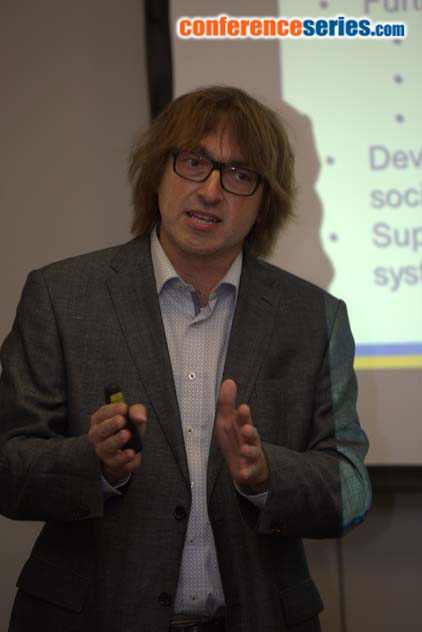
Marcel Weil
Karlsruhe Institute of Technology, Germany
Title: System analysis of energy storage for stationary grid application - An economic and ecological perspective
Biography
Biography: Marcel Weil
Abstract
The German energy turnaround is considered as a big challenge, due to the necessity of the integration of a high share in fluctuating renewable energy sources within the energy grid. The complexity will increase also due to the growth of active stakeholders, decentralized energy production and trans-sectoral connections (e.g. mobility and heat demand sector). Experts are convinced that energy storage will play an important role with the future grid (Figure 1). But the predictions how much energy storage capacity we need for short, mid, and long term until 2050 differ significantly. In any case will the future application and broad dissemination of energy storage depend on the cost development per kWh. For electrochemical energy storage (batteries) a strong production cost reduction is predicted until 2030, with potentially costs below 200 €/kWhs. But production costs are not sufficient to compare an economic base energy storage options with different technology performance (e.g. energy density, charge/discharge efficiency, calendric life time, cycle life time). Instead cost has to be analyzed over the whole life cycle (from resource extraction, production, use phase and recycling or waste management) for the different considered applications with respective specific load profiles. For the investigation four stationary applications are considered: 1. Electric time shift (ETS)/, “Arbitrage” (Energy/Power = 4); 2. Increase of photovoltaics self-consumption (PVSC, Energy/Power = 3.2); 3. Primary regulation (PR, Energy/Power = 1); 4. Renewables support (RS, Energy/Power = 10). The presented work compares the economic and ecological performance of 8 different battery options, including diverse Li-Ion and redox flow batteries. The effects of parameter variations are investigated within a sensitivity analysis.
Recent Publications
1. Hirao, S., Yamazawa, H., Nagae, T. (2013). Estimation of release rate of iodine-131 and cesium-137 from the Fukushima Daiichi nuclear power plant: Fukushima NPP Accident Related. Journal of Nuclear Science and Technology, 50(2): 139-147.
2.Park S-U (2015) Spatial distributions of aerosol loadings and depositions in East Asia during the year 2010, Atmospheric Environment 107:244-154.
3.Park, S.-U., Choe, A., Park, M.-S., (2013) Atmospheric dispersion and deposition of radionuclides (137Cs and 131I) released from the Fukushima Dai-ichi nuclear power plant. Computational Water, Energy, and Environmental Engineering. 2:61-68.
4.Park S-U, Lee I-H, Ju J-W, Ju S-J (2016) Estimation of radionuclide (137Cs) emission rates from a nuclear power plant accident using the Lagrangian Particle Dispersion Model (LPDM). J. Environmental Radioactivity 162-163: 258-262.
5.Stohl, A., Seibert, P., Wotawa, G., (2012) The total release of xenon-133 from the Fukushima Dai-ichi nuclear power plant accident. J. environ. Radioact. 112: 155-159.
6.Tanaka, K., Takahashi, Y., Sakaguchi, A., Umeo, M., Hayakawa, S., Tanida, H., Kanai, Y., (2012) Vertical profiles of iodine-131 and cesium-137 in soils in Fukushima prefecture related to the Fukushima Daiichi Nuclear Power Station accident. Geochemical J. 46(1): 73-76


